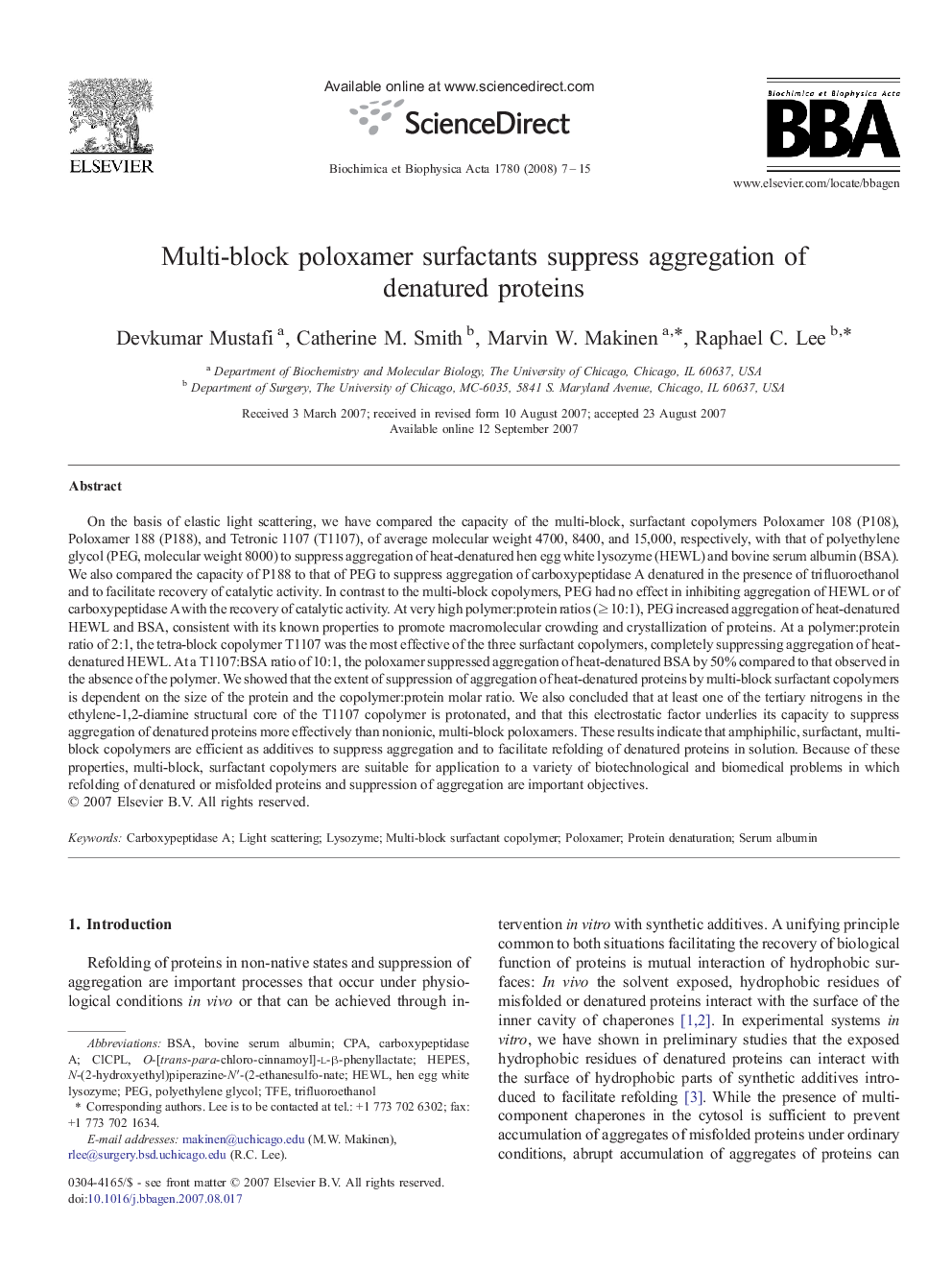| Article ID | Journal | Published Year | Pages | File Type |
|---|---|---|---|---|
| 1948432 | Biochimica et Biophysica Acta (BBA) - General Subjects | 2008 | 9 Pages |
On the basis of elastic light scattering, we have compared the capacity of the multi-block, surfactant copolymers Poloxamer 108 (P108), Poloxamer 188 (P188), and Tetronic 1107 (T1107), of average molecular weight 4700, 8400, and 15,000, respectively, with that of polyethylene glycol (PEG, molecular weight 8000) to suppress aggregation of heat-denatured hen egg white lysozyme (HEWL) and bovine serum albumin (BSA). We also compared the capacity of P188 to that of PEG to suppress aggregation of carboxypeptidase A denatured in the presence of trifluoroethanol and to facilitate recovery of catalytic activity. In contrast to the multi-block copolymers, PEG had no effect in inhibiting aggregation of HEWL or of carboxypeptidase A with the recovery of catalytic activity. At very high polymer:protein ratios (≥ 10:1), PEG increased aggregation of heat-denatured HEWL and BSA, consistent with its known properties to promote macromolecular crowding and crystallization of proteins. At a polymer:protein ratio of 2:1, the tetra-block copolymer T1107 was the most effective of the three surfactant copolymers, completely suppressing aggregation of heat-denatured HEWL. At a T1107:BSA ratio of 10:1, the poloxamer suppressed aggregation of heat-denatured BSA by 50% compared to that observed in the absence of the polymer. We showed that the extent of suppression of aggregation of heat-denatured proteins by multi-block surfactant copolymers is dependent on the size of the protein and the copolymer:protein molar ratio. We also concluded that at least one of the tertiary nitrogens in the ethylene-1,2-diamine structural core of the T1107 copolymer is protonated, and that this electrostatic factor underlies its capacity to suppress aggregation of denatured proteins more effectively than nonionic, multi-block poloxamers. These results indicate that amphiphilic, surfactant, multi-block copolymers are efficient as additives to suppress aggregation and to facilitate refolding of denatured proteins in solution. Because of these properties, multi-block, surfactant copolymers are suitable for application to a variety of biotechnological and biomedical problems in which refolding of denatured or misfolded proteins and suppression of aggregation are important objectives.
